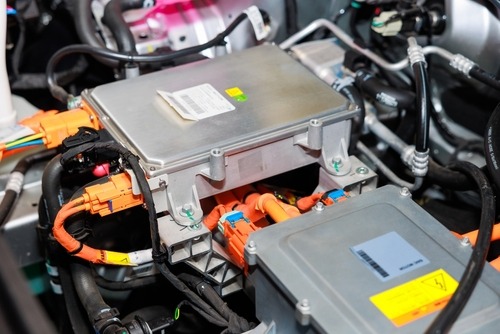Trading the 900% Surge in Lithium Prices
Over the last 12 months, lithium prices have been up a jaw-dropping 900%. A ton of lithium now trades for over $70,000.

Bear sentiment has taken hold in a wide range of markets during 2022, but one notable exception is the global lithium market.
Over the last 12 months, lithium prices have been up a jaw-dropping 900%. Last August, a ton of lithium was trading for roughly $7,000 in the Shanghai metals market. Today, a ton of the same material sells for over $70,000.
Strength in the lithium market is especially interesting because many other major commodities markets have weakened in 2022, such as crude oil, copper and lumber. Commodity prices have been under pressure in recent months because growth in the economy appears to be slowing, which typically results in weaker demand for commodities.
Lithium has been an exception, however, because the supply-demand dynamic remains extremely favorable in this market. The primary demand for lithium stems from lithium-ion batteries, which power everything from smartphones to electric vehicles (EVs).
In 2022, surging global demand for electric vehicles is one of the biggest drivers of the lithium rally because EV battery packs require extensive amounts of this material. For example, the Tesla (TSLA) Model S battery pack weighs 1,000 pounds, of which roughly 13% is lithium.
That amount is on the higher end of EV spectrum, with the average EV battery pack requiring roughly 23 pounds of lithium. Regardless, these figures illustrate that the EV revolution will require massive amounts of lithium to truly take flight.
Unfortunately, global lithium producers aren’t yet able to keep pace with demand.
Last year, total lithium production amounted to roughly 100,000 tons, or 200 million pounds. Even if 100% of that production was funneled to the EV sector (which it isn’t), that would only allow for the production of 8.5 million EV battery packs (200 million pounds divided by 23 pounds per vehicle).
That’s far short of the number of electric vehicles that could theoretically be manufactured if supplies of commercial lithium were more robust. This situation helps explain why lithium prices have exploded in 2022. Unless lithium production expands significantly in the foreseeable future, there’s a firm ceiling on the number of EVs that can be produced annually.
A review of recent light vehicle sales numbers helps illustrate the current market realities.
For example, global sales of light vehicles totaled about 80 million units in 2021. Of those 80 million units, roughly 6.6 million were EVs—about 8% of the total.
In 2022, global EV sales are up from 2021, but only marginally. During the first six months of 2022, roughly 4.2 million EVs have been sold. That suggests that total EV sales in 2022 could be as high as 8.4 million units—a 27% increase from 2021. While that growth rate is impressive, the actual demand for EVs is likely a lot higher.
What’s clear is that electric vehicles can’t grab a significant percentage of the light vehicle market without a proportional increase in the available supply of lithium.
For example, if the 80 million vehicles produced in 2021 were all EVs, that would require over one million tons of lithium. That’s assuming 100% of the total lithium production in the world was funneled toward the EV sector. But that won’t happen for some time. And these statistics help illustrate how challenging it will be for the world to meet its climate goals using lithium-powered EVs.
In terms of abundance, lithium is relatively plentiful—it’s the 25th most abundant element. But it can take a long time for greenfield (i.e. brand new) lithium mines to reach maturity. Most estimates suggest a range of four to seven years. That indicates the available supply of lithium can’t be increased exponentially in the near future.
Another complication is that lithium deposits tend to be concentrated in certain regions of the world, as illustrated below:
Source: BatteryIndustry.tech
The above illustrates that geopolitical factors will also likely play a big role in the future of the lithium industry.
But with lithium supplies in perpetual deficit at this time, surging demand is pushing prices higher. At some point, however, the price of lithium might get too high. In an environment already characterized by high inflation, it will be hard for EV manufacturers to increase prices further.
It’s entirely possible that deterioration in the underlying economy could also spread into the EV sector. A softening of demand for EVs would undoubtedly help push down lithium prices.
Along those lines, any big developments relating to battery innovation, especially those that shift the focus from lithium, could also help to cool prices. “Solid-state” batteries, which have shown early promise in laboratory settings, are one example of an emerging technology that could help power the EV industry, without copious amounts of lithium.
As such, investors and traders in the lithium space should not only be following the lithium narrative itself, but also the tangential battery stories that could ultimately represent the next big thing in this sector.
To track and trade the lithium sector, readers can add the following tickers to their watchlists:
- Amplify Lithium & Battery Technology ETF (BATT)
- Energizer (ENR)
- EnerSys (ENS)
- FMC Corp (FMC)
- Ganfeng Lithium (GNENY)
- Global X Lithium & Battery Tech ETF (LIT)
- Lithium Americas (LAC)
- Livent Corporation (LTHM)
- Piedmont Lithium Limited (PLL)
- Pilbara Minerals Limited (PILBF)
- QuantumScape (QS)
- Sigma Lithium Corp (SGML)
- Sociedad Química de Chile (SQM)
- Standard Lithium (SLI)
For daily updates on everything moving the markets, check out TASTYTRADE LIVE—weekdays from 7 a.m. to 4 p.m. CDT.
Sage Anderson is a pseudonym. He’s an experienced trader of equity derivatives and has managed volatility-based portfolios as a former prop trading firm employee. He’s not an employee of Luckbox, tastytrade or any affiliated companies. Readers can direct questions about this blog or other trading-related subjects, to support@luckboxmagazine.com.



















